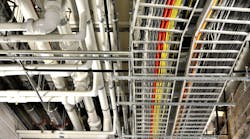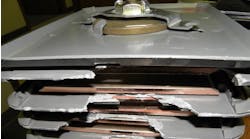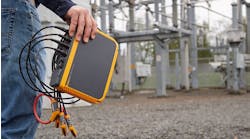Photo credit: JLRPhotographer/iStock/Thinkstock
The National Electrical Code (NEC) requires you to evaluate the equipment you’re installing to help ensure it’s appropriate for the specific application. Eight examination criteria are listed in Sec. 110.3(A)(1) through (8):
- Suitability for the installation and use in conformity with the provisions of the NEC. Two Informational Notes help explain what is meant by this.
- Mechanical strength and durability. Not just in general, but for the specific application. As an example, electrical tubing is very strong and durable, but you may need to step up to rigid conduit because of lift truck traffic in the area.
- Wire-bending and connection space. Make sure you take into account the minimum bend radius of each conductor. Other kinds of wiring may have “excessive” need for space—some types of signal cables, for example. Figure all this out before mounting the box.
- Electrical insulation. Is it suitable for the environment? THHN is widely used, but you want to run THHW in that damp location instead of THHN.
- Heating effects under normal use. But also under abnormal conditions likely to arise in service.
- Arcing effects. This includes a wide range of considerations for routing, spacing, bushings, and enclosures.
- Classification by type, size, voltage, current capacity, and specific use.
- Other factors that contribute to the practical safeguarding of persons using or likely to come in contact with the equipment. This “catch all” requirement is there because Code-making panel members can’t think of every possible issue. It’s up to the designer and installer to examine an installation for potential safety issues and mitigate or solve them.
Sponsored Recommendations
Sponsored Recommendations
Sponsored
Sponsored




